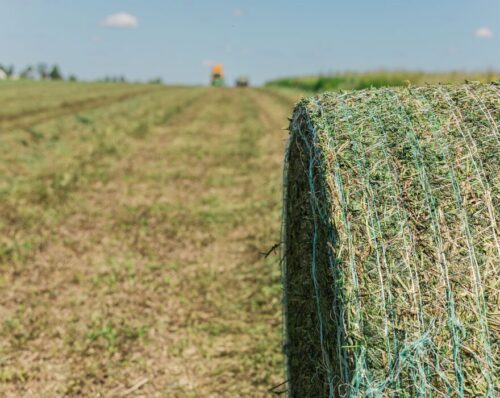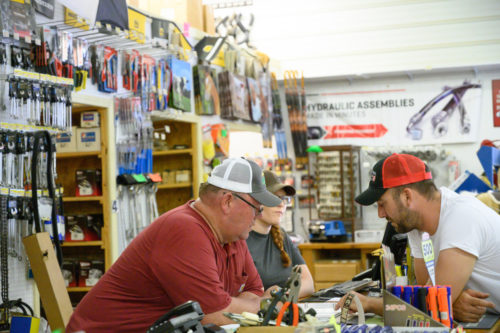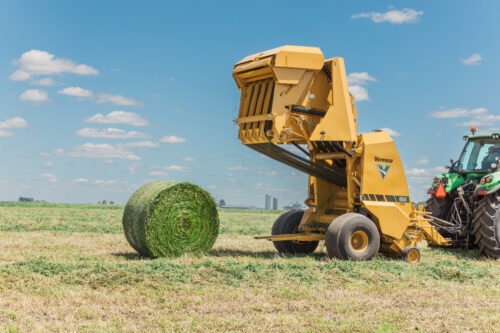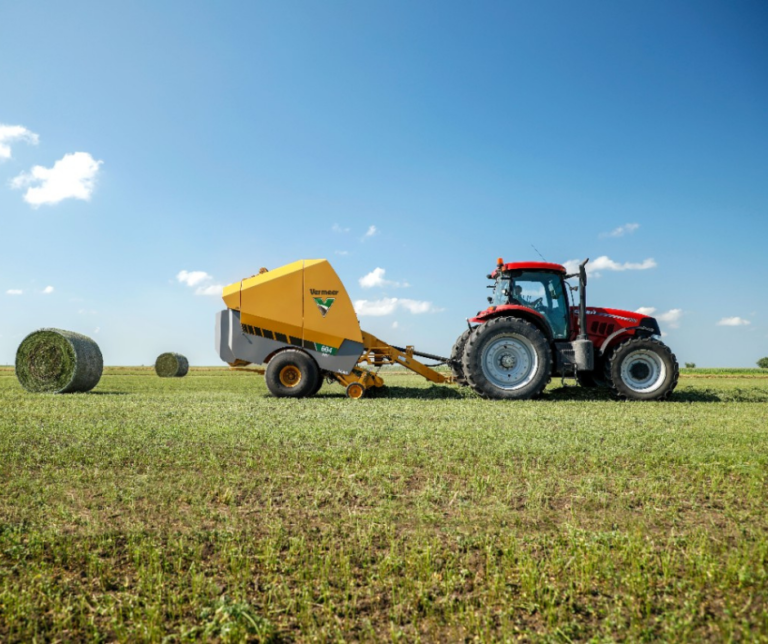
Pre-Cutter Balers Benefit Both Hay And Livestock Producers
May 2022
Experts like University of Wisconsin Forage Agronomist Dr. Dan Undersander say if you’re not considering using a hay baler that includes a pre-cutting system, you should be. Many hay producers have found that the investment in a pre-cutter baler can pay off in the long run.
“Data would indicate that pre-cutting is very beneficial both to the person making the bales and to the person feeding the bales,” Undersander said. Read on to learn more about the benefits of a pre-cutter baler, and watch this video about the advantages of balers equipped with a pre-cutting system to hear more from Undersander himself.
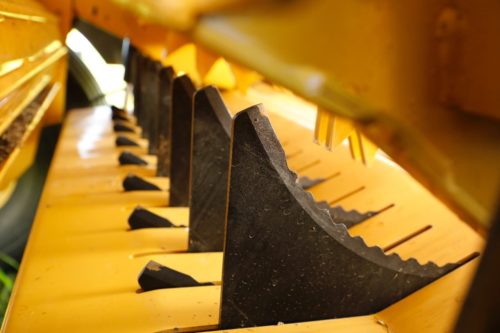
How does a pre-cutter baler work?
Before we explore all the benefits of pre-cutter, or crop-cutter, balers, let’s look at how they work. Balers with pre-cutting systems use knives to cut the forage before it’s rolled into a bale. In these machines, a rotor placed behind the pickup pulls the crop over a set of baler knives and into the bale chamber.
4 ways pre-cutter balers benefit hay producers
Undersander explains that by cutting hay into smaller pieces, you can create denser bales. Making denser bales can help your hay operation run more efficiently.
- Denser bales help you pack more tonnage into a bale. Since only the density of the bale increases and not its size, you can store more hay in the same space.
- The denser a bale is, the better it will hold its form. This makes it easier to stack bales and keeps the stack more stable.
- With denser bales, you can transport more weight in the same amount of space, helping you manage transportation costs.
- Making denser bales may help you manage packaging costs. More forage in one bale means you’re using less netwrap and plastic, which can save both time and money.
3 ways crop-cutter balers benefit livestock producers
The benefits of using a baler with baler knives extend to those who are feeding livestock too. It’s a simple reminder, but Undersander will tell you that cattle eat pounds, not bales. So, denser bales mean more forage packed into less space. Pre-cut bales benefit livestock producers in a few other ways, as well.
- It’s easier to incorporate hay into a TMR (total mixed ration) that has been cut short with a pre-cut bale. Pre-cut bales are easier to break apart and mix into a TMR. This can help save time spent on feeding.
- Pre-cut bales help reduce waste because cows don’t drop forage out of the sides of their mouths like they do when it isn’t cut to a shorter length.
- With pre-cut forage, cows consume more because they have to chew less. This can lead to improved animal performance and weight. According to Dr. Undersander’s studies, producers can see a 10% improvement in animal gain because of this.
“If you put a bale into a bunk to be fed, a cow will go up to the bale, backup and chew, dropping off a portion on either side of its face before swallowing what it had in its mouth. If you have the forage pre-cut into a 4-inch length, the animal consumes a larger portion of that forage and drops less outside the bunk — that’s an improved feed efficiency.” –Dr. Dan Undersander, University of Wisconsin Forage Agronomist
For more ideas about improving feed efficiency, check out these articles:
Stop hay waste with the right feed management
Help prevent costly forage waste, optimize feeding with a vertical feed mixer
If you have questions about how a baler with a pre-cutting system can help your operation, reach out to your local Vermeer dealer.
This article contains third-party observations, advice or experiences that do not necessarily reflect the opinions of Vermeer Corporation, its affiliates or its dealers.


